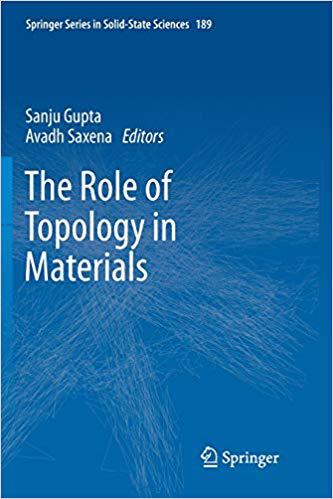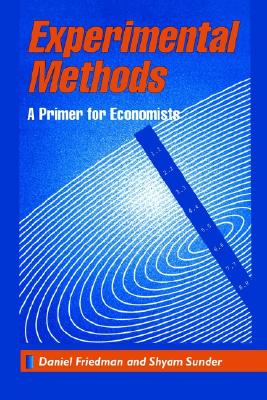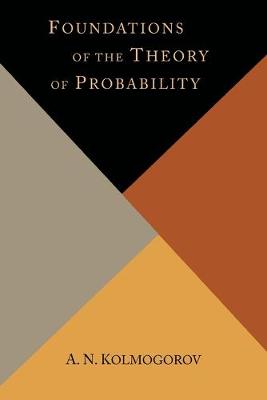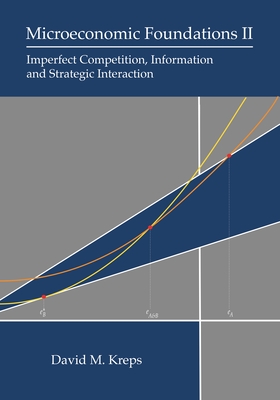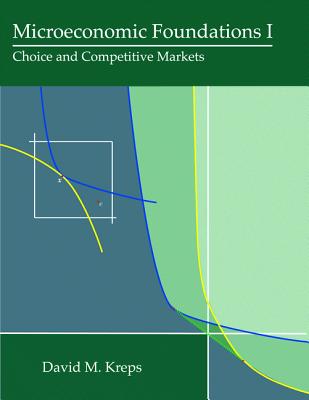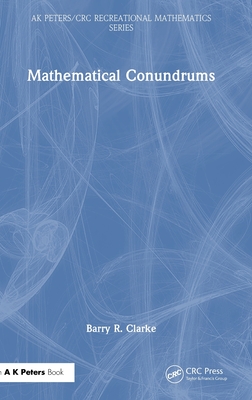图书简介
This book presents the most important advances in the class of topological materials and discusses the topological characterization, modeling and metrology of materials. Further, it addresses currently emerging characterization techniques such as optical and acoustic, vibrational spectroscopy (Brillouin, infrared, Raman), electronic, magnetic, fluorescence correlation imaging, laser lithography, small angle X-ray and neutron scattering and other techniques, including site-selective nanoprobes. The book analyzes the topological aspects to identify and quantify these effects in terms of topology metrics. The topological materials are ubiquitous and range from (i) de novo nanoscale allotropes of carbons in various forms such as nanotubes, nanorings, nanohorns, nanowalls, peapods, graphene, etc. to (ii) metallo-organic frameworks, (iii) helical gold nanotubes, (iv) Moebius conjugated polymers, (v) block co-polymers, (vi) supramolecular assemblies, to (vii) a variety of biological and soft-matter systems, e.g. foams and cellular materials, vesicles of different shapes and genera, biomimetic membranes, and filaments, (viii) topological insulators and topological superconductors, (ix) a variety of Dirac materials including Dirac and Weyl semimetals, as well as (x) knots and network structures. Topological databases and algorithms to model such materials have been also established in this book. In order to understand and properly characterize these important emergent materials, it is necessary to go far beyond the traditional paradigm of microscopic structure-property-function relationships to a paradigm that explicitly incorporates topological aspects from the outset to characterize and/or predict the physical properties and currently untapped functionalities of these advanced materials. Simulation and modeling tools including quantum chemistry, molecular dynamics, 3D visualization and tomography are also indispensable. These concepts have found applications in condensed matter physics, materials science and engineering, physical chemistry and biophysics, and the various topics covered in the book have potential applications in connection with novel synthesis techniques, sensing and catalysis. As such, the book offers a unique resource for graduate students and researchers alike.
1. Gareth Alexander (University of Warwick), G.P.Alexander@warwick.ac.ukSoft matter, twisted materials. Assistant Professor in Physics and Complexity Science. His primary interests are in applications of geometry and topology to the understanding of soft material systems, in general and defects in liquid crystals, in particular, and self-propulsion in low Reynolds number hydrodynamics and active matter. Working with Randy Kamien (University of Pennsylvania), he became an authority in this area with a recent publications "Instabilities and Solitons in Minimal Strips", Phys. Rev. Lett. 117, 017801 (2016). with Thomas Machon, Raymond E. Goldstein, and Adriana I. Pesci; "Global Defect Topology in Nematic Liquid Crystals", Proc. R. Soc. A 472, 20160265 (2016) with Thomas Machon; "Umbilic Lines in Orientational Order", Phys. Rev. X 6, 011033 (2016), with Thomas Machon; "Motility of active fluid drops on s urfaces", Phys. Rev. E 92, 062311 (2015), with Diana Khoromskaia. 2. Arun Bansil (Northeastern University), ar.bansil@northeastern.edu Dirac materials, Weyl semimetals. University Distinguished Professor (Ph.D. Harvard). A world authority on the electronic structure of topological materials, nanosystems and complex materials including topological insulators, Dirac materials, Weyl semimetals, etc. Recently predicted many new materials that have been synthesized. He has multiple high profile publications to his credit. Former DOE program manager, US editor of J. Phys. Chem. Solids. 3. Rossen Dandoloff (Univ. de Cergy-Pontoise, France), rossen.dandoloff@u-cergy.fr, rdandoloff@yahoo.comHeisenberg magnets and magnetism on curved surfaces. Recently retired professor from the University of Cergy-Pontoise (Paris) and an authority on the geometry and topology of spins systems, geometric phase, topological excitations, knots, parallel transport and quantum mechanics of curved manifolds. He has several important publications to his name in this field and has mentored many students on the topic of geometry and topology. 4. Mark Dennis (Univ. of Bristol), Mark.Dennis@bristol.ac.uk Geometry and topology of knots: electron vortices and wave dislocations. Professor of Theoretical Physics in the Theoretical Physics Group of the School of Physics. His main research is in Optical Field Theory and Topological Physics. These topics involve his primary focus on geometric and topological aspects of wave physics, especially their manifestation in structured light and quantum wave functions: * Singular and topological optics, including optical and electron vortices, wave dislocations and polarization singularities. * Statistical geometry and topology of rando m functions, with application to quantum chaos, statistical optics and cosmology. * Geometry and topology of knots, links, braids and ribbons, especially those in spatially-extended fields. 5. Rumiana Dimova and Roland Knorr (Max-Planck Inst. Of Colloids and Interfaces, Germany), Rumiana.Dimova@mpikg.mpg.de and Roland.Knorr@mpikg.mpg.de The main focus of research is on shape transformations in lipid vesicles. They are Team Leaders in the field of Biomembranes and giant vesicles. Their group employs giant vesicles for systematic measurements of the properties of lipid bilayers as a function of membrane composition and phase state, surrounding media, curvature, topology and temperature. They have investigated membrane responses to external factors such as ions, amphiphilic (biomacro-) molecules and polymers, membrane-wetting aqueous phases, hydrodynamic flows or electromagnetic fields and have measured topologies associated with genus. 6. Sanju Gupta (W. Kentucky Univ.) and Avadh Saxena (Los Alamos), Sanju.gupta@wku.edu and Avadh@lanl.gov Topology of nanocarbons and functional materials. 7. Erika Kauffman (Purdue University), ebkaufma@math.purdue.edu Wire networks, gyroids and triply periodic materials. Associate Professor of Mathematics and Physics. She is an expert in the modeling of non-equilibrium systems and quantum wire networks. Her research spans triply-periodic minimal surfaces and finite-size scaling in atomic models. She was awarded an NSF Career grant on Physical properties of new materials via mathematics -- methods and applications. 8. Jacob Kirkensgaard (University of Copenhagen), jjkk@nbi.ku.dk Triply periodic and gyroid sturctures. Associate Professor in the X-ray and Neutron Science group at the Niels Bohr Institute, His research is centered around mesoscale self-assembly and the formation of geometrically and topologically complex structures. He combines expertise in coarse-grained molecular dynamics simulations of soft matter self-assembly with structural investigations of soft matter systems using small-angle scattering techniques (i.e. metrology of topological systems). 9. Cristiano Nisoli (Los Alamos National Lab) and Gia-Wei Chern (University of Virginia), Cristiano@lanl.gov and gc6u@eservices.virginia.edu Designed frustration in artificial spin ice. Staff Member at the Theoretical Division and a pioneer of the Artifical Spin Ice (ASI) materials and their topological defects including monopoles. Many recent marquee publications including in Physics Today, Nature, Nature Physics, Reviews of Modern Physics and Physical Review Letters. Clearly an emerging world leader in this field of research. 10. Jun Onoe (Univ. Nagoya) and Hiroyuki Shima (Yamanashi Univ., Japan), j-onoe@nucl.nagoya-u.ac.jp and hshima@yamanashi.ac.jp Complex carbon nanomaterials and their topology. Leading professor at the Department of Materials, Physics and Energy Engineering in the Division of Quantum Science. Outstanding contributions to the synthesis and topological characterization of carbon nanomaterials; discoverer of the bucky-ball polymer. Frequently invited speaker and an authority on this topic. He has organized many workshops on this important and growing topic. 11. Tony Roberts (Univ. Queensland Australia), apr@maths.uq.edu.au Cellular structures and properties. Associate Professor of Mathematics and Physics. His research interests are in Mathematical Materials Science. The properties of many important natural and manufactured materials are linked to their internal microstructure. The study of how these microstructural det ails influence macroscopic properties leads to fascinating scientific and mathematical questions. The results show how manufactured materials can be optimized via Topology Optimization: Design of artificial bone implants, Models of random structures: Gaussian random fields, 3D Poisson models, percolation models, diffusion limited aggregation, fractal networks and trees, Analysis of experimental techniques: Statistical reconstruction of 3D models from 2D images; Small angle neutron and x-ray scattering. 12. Tamar Schlick (New York Univ.), schlock@nyu.edu Topological soft matter. Professor of Chemistry, Mathematics and Computer Science, Courant Institute. Author of a textbook on Molecular Modeling. Fellow of APS, AAAS, SIAM and Biophysical Society. On the Editorial Boards of several journals. Substantial contributions to the topology of chromatin, RNA and various other biomolecules. She is a prolific researcher with about 6000 citations (according to the Web of Science) and an h-index of 44. 13. Gennady Shvets (Univ. Texas at Austin), gena@physics.utexas.edu Topological photonic materials. Professor of photonics (Ph.D. from MIT). Fellow of American Physical Society and the Optical Society of America. Frequent invited speaker who has made significant contributions to photonic metamaterials, plasmonics and photonic topological materials. Over 7000 citations with an h-index of 44 (Web of Science). 14. David Srolovitz and Menachem Lazar (Univ. Pennsylvania), srol@seas.upenn.edu and mlazar@seas.upenn.edu Topology of Microstructure Optimization Named Professor of Materials Science & Engineering, Mechanical Engineering and Applied Mechanics, and Computer and Information Science. Former chair at Princeton University and President of Yeshiva University. MRS Fellow, IoP Fellow, ASM International Fellow. He is a distinguished researcher with xtensive contributions to the topology of materials microstructure and topological defects such as dislocations. 15. Joanna Sulkowska (University of Warsaw), jsulkows@gmail.com DNA knotting and lasso topologies in biomaterials. eam leader of interdisciplinary laboratory of biological systems modeling at the Center of new Technologies. Her scientific interests and expertise are directly associated with knot theory in DNA and other biological molecules, such as the development of multi-dimensional models for the analysis of energy landscape of proteins with complex structures, as proteins with non-trivial topology; development of analytical methods as direct coupling analysis (DCA) and bioinformatics tools for analysis of amino acids evolution and their application to prediction of protein structures (including membrane proteins) and alternative protein folding mechanism; development and application of mathematical knot theory to determine the topology of open chain and its application to proteins and nucleic acids. 16. Mingliang Tian (Hefei, China), tianml@hmfl.ac.cn Skyrmions in confined geometries. Professor of Physics at High Magnetic Field Lab (Hefei), University of Science and Technology of China, Chinese Academy of Science and former professor at Penn State University. Substantial contributions to quantum properties of topological materials including helical magnets and skyrmions. Many high profile papers published on this topic including a recent Nature Commun. paper on skyrmions in confined geometries.
Trade Policy 买家须知
- 关于产品:
- ● 正版保障:本网站隶属于中国国际图书贸易集团公司,确保所有图书都是100%正版。
- ● 环保纸张:进口图书大多使用的都是环保轻型张,颜色偏黄,重量比较轻。
- ● 毛边版:即书翻页的地方,故意做成了参差不齐的样子,一般为精装版,更具收藏价值。
关于退换货:- 由于预订产品的特殊性,采购订单正式发订后,买方不得无故取消全部或部分产品的订购。
- 由于进口图书的特殊性,发生以下情况的,请直接拒收货物,由快递返回:
- ● 外包装破损/发错货/少发货/图书外观破损/图书配件不全(例如:光盘等)
并请在工作日通过电话400-008-1110联系我们。
- 签收后,如发生以下情况,请在签收后的5个工作日内联系客服办理退换货:
- ● 缺页/错页/错印/脱线
关于发货时间:- 一般情况下:
- ●【现货】 下单后48小时内由北京(库房)发出快递。
- ●【预订】【预售】下单后国外发货,到货时间预计5-8周左右,店铺默认中通快递,如需顺丰快递邮费到付。
- ● 需要开具发票的客户,发货时间可能在上述基础上再延后1-2个工作日(紧急发票需求,请联系010-68433105/3213);
- ● 如遇其他特殊原因,对发货时间有影响的,我们会第一时间在网站公告,敬请留意。
关于到货时间:- 由于进口图书入境入库后,都是委托第三方快递发货,所以我们只能保证在规定时间内发出,但无法为您保证确切的到货时间。
- ● 主要城市一般2-4天
- ● 偏远地区一般4-7天
关于接听咨询电话的时间:- 010-68433105/3213正常接听咨询电话的时间为:周一至周五上午8:30~下午5:00,周六、日及法定节假日休息,将无法接听来电,敬请谅解。
- 其它时间您也可以通过邮件联系我们:customer@readgo.cn,工作日会优先处理。
关于快递:- ● 已付款订单:主要由中通、宅急送负责派送,订单进度查询请拨打010-68433105/3213。
本书暂无推荐
本书暂无推荐
